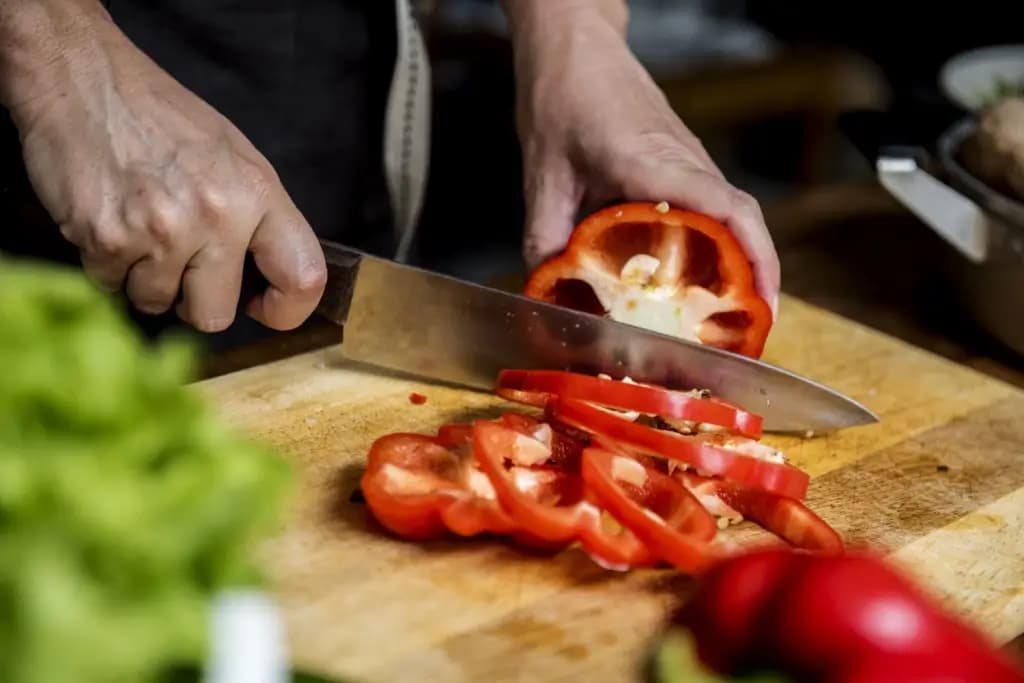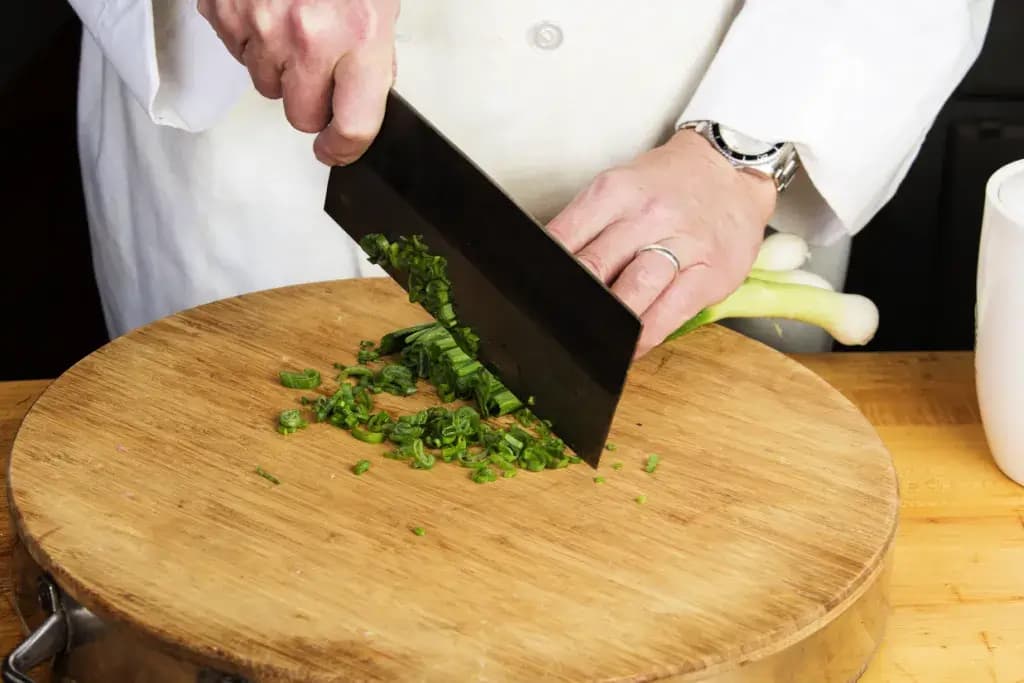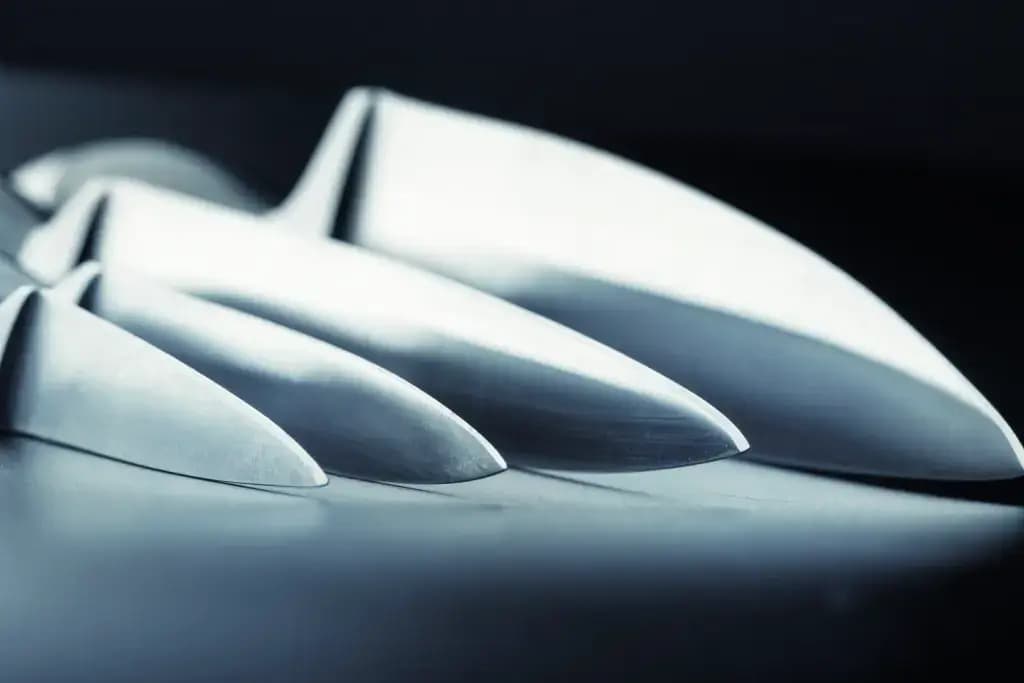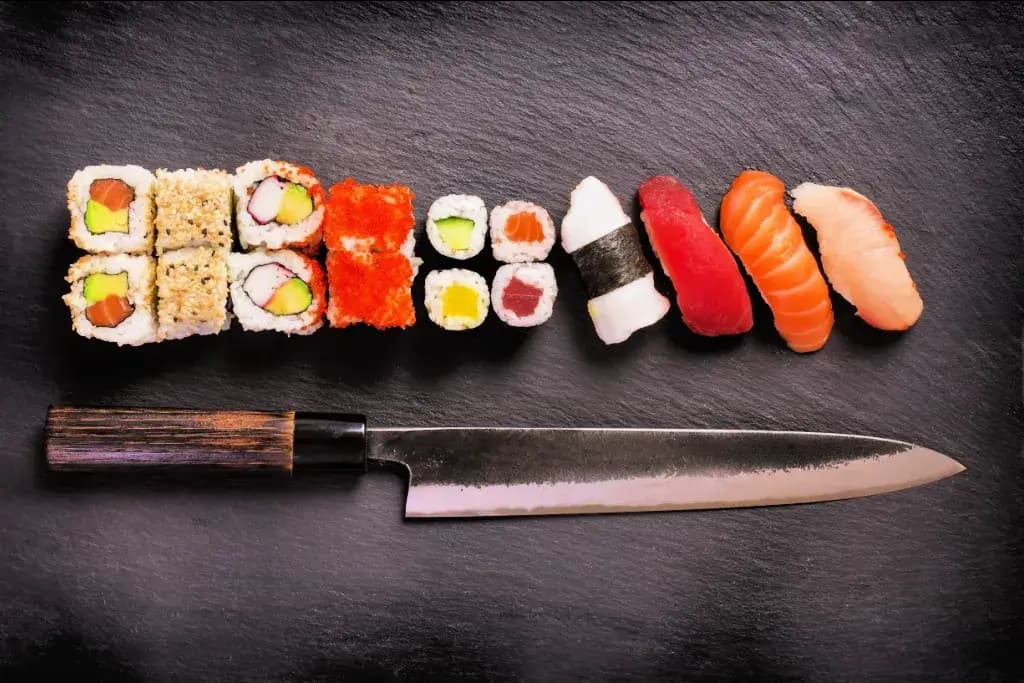

2025 OCTOBER 23
.Karina Ikedo
Hocho Knife: Learn Even More Cutting Techniques!
Japanese cooking is all about balance, harmony, and respect for ingredients. Flavors matter, but cutting also changes taste, texture, and appearance. This is where hocho sabaki (the art of knife handling) becomes essential. A sharp, well-maintained Japanese hocho knife makes cooking easier and allows ingredients to shine.
In this second part of our series, we’ll learn four essential techniques. They are the kushigatagiri (wedge cut), mijingiri (minced cut), hyōshigigiri (stick cut), and sainomegiri (dice cut). Each technique serves a purpose, helping Japanese food cook evenly, absorb flavors, and look beautiful on the plate. Keep reading to discover how each cut works and how you can practice at home!
Wedge Cut (Kushigatagiri)
The wedge cut, also known as kushigatagiri, is often used for round vegetables and fruits, such as onions, tomatoes, or citrus. Each piece fans out like a hand-held fan, which gives this cut its name and shape.

To make this cut, slice the vegetable or fruit in half lengthwise. Place the flat side down to keep it stable. Then cut into equal wedges by angling your hocho knife from the center outward.
This cut is perfect for simmered dishes like nikujaga (meat and potato stew), stir-fries, and even soups. Onions cut into wedges keep their shape while cooking, yet soften enough to release sweetness. Cutting tomatoes into wedges makes a simple salad look more elegant. For best results, keep your cuts uniform and consistent. Consistency helps every piece cook evenly and look polished on the plate.
Minced Cut (Mijingiri)
If you’ve ever chopped garlic, onions, or ginger into tiny bits, you’ve practiced mijingiri.
This versatile cut yields small, even pieces that blend seamlessly into fillings, sauces, and stir-fries.

To do it, slice the ingredient into thin planks. Next, cut the planks into narrow strips. Rotate the strips and chop across to make tiny pieces. For even finer results, rock your hocho knife over the pile.
Mijingiri onions create the base for hambāgu (Japanese hamburger steak), korokke (croquettes), and gyoza (dumpling) fillings. Garlic and ginger, when cut this way, add flavor and brightness to stir-fries and marinades. Always keep your knife sharp. A dull blade crushes vegetables instead of slicing them, which causes uneven texture and less flavor.
Stick Cut (Hyōshigigiri)
The stick cut, or hyōshigigiri, turns vegetables into rectangular sticks. The name comes from hyōshigi (wooden clappers) used in kabuki (traditional Japanese theater).

To do it, slice the vegetable into slabs about one cm thick. Stack the slabs neatly. Cut lengthwise into even sticks, approximately 1 cm wide and 4 to 5 cm long. This cut works well for root vegetables like carrots, daikon (a type of Japanese radish), or potatoes. It is great in simmered dishes like chikuzenni (braised chicken and vegetables) or in stir-fries, adding a chunky, rustic texture.
Use this cut when you want a hearty bite and bold presence in your dish. Unlike thin slices, these sticks hold their shape even after cooking for a long time.
Are you looking for great knives to practice techniques with? Check out ZAKU! ZAKU has authentic knives handmade in Japan for all of your culinary needs!

Dice Cut (Sainomegiri)
The dice cut, or sainomegiri, turns vegetables into small cube-like pieces. The name comes from sai no me (the face of dice). This cut often starts with hyōshigigiri sticks, which are rotated and sliced into neat cubes.

To do it, start by making stick cuts. Rotate the sticks crosswise. Then slice into small cubes, usually about one cm per side. Diced daikon or carrot is commonly used in soups like kenchinjiru (vegetable soup). Diced potatoes or cucumbers are often featured in Japanese-style salads.
This cut also works well for fried rice and mixed rice dishes, such as takikomi gohan (seasoned rice with vegetables). Uniform pieces create a balanced, pleasing dish. The smaller the dice, the faster it cooks. Keeping all cubes the same size helps the dish look and taste refined.
Tips to Practice at Home
Start with easy vegetables like carrots, cucumbers, or onions. Focus on making each cut the same size. Use a sharp hocho knife and a stable cutting board for safety and better control.

Practice slowly at first, paying close attention to hand placement and the knife’s angle. Try one cut at a time, wedge, minced, stick, and dice, until it feels comfortable and natural. Consistency is important. Uniform pieces cook evenly, making your dishes look neat and professional.
Why Knife Skills Matter
At first, these cuts appear to be minor details. In Japanese cuisine, precision is an integral part of the artistry. A wedge-cut onion releases sweetness slowly as it simmers. A minced onion melts into a sauce without being noticed.

Stick and dice cuts highlight texture and give visual balance to a dish. Mastering hocho sabaki with your hocho knife deepens respect for each ingredient. Whether you’re making miso soup, a colorful stir-fry, or a simmered dish, how you cut ingredients shapes the meal.
Practicing wedge cuts, minced cuts, stick cuts, and dice cuts builds confidence in the kitchen. With a sharp hocho knife, even the simplest carrot or onion can become something extraordinary. Which Japanese cutting technique do you want to try first? What vegetable would you like to practice it on? Share them in the comments below!


















